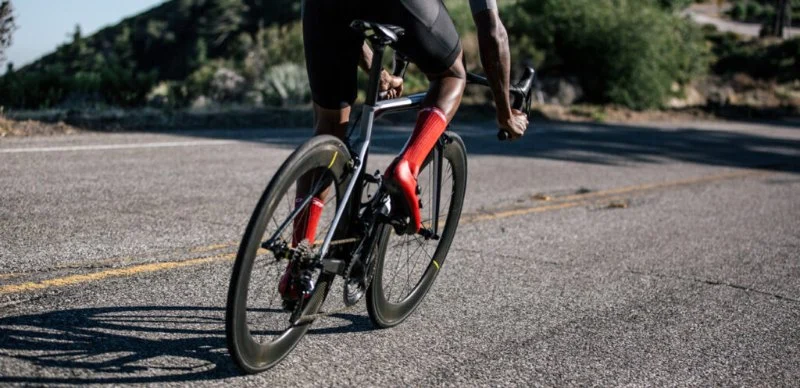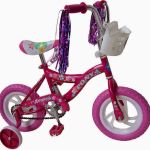
- 1- Understanding Bike Fit Basics
- 2- Why Proper Bike Fit Matters
- 3- The Key Components of Bike Fit
- 4- How to Determine Your Ideal Bike Fit
- 5- Common Bike Fit Mistakes to Avoid
- 6- Tips for Maintaining the Right Bike Fit
- 7- Conclusion: Getting the Most from Your Ride
1- Understanding Bike Fit Basics
For any cyclist, whether you're a beginner or an experienced rider, achieving the proper bike fit is crucial for comfort, performance, and injury prevention. Bike fit is not a one-size-fits-all concept, and understanding the basics will help you adjust your bike to suit your body, ensuring the best possible riding experience. In this article, we’ll cover everything you need to know about bike fit and how it can enhance your cycling performance.
2- Why Proper Bike Fit Matters
A proper bike fit is essential for several reasons. It directly impacts your comfort, reduces the risk of injuries, and enhances your efficiency on the bike. When your bike is properly fitted, your body is in an optimal riding position, which can help you ride longer and with less strain. Poor bike fit, on the other hand, can lead to discomfort, muscle fatigue, and even chronic pain in areas like the knees, back, and neck.
Whether you're riding for fitness, commuting, or racing, the right fit ensures that you're getting the most out of your ride without compromising your health.
3- The Key Components of Bike Fit
There are several key components that determine the proper fit for your bike. These include:
3.1- Saddle Height
Saddle height is one of the most important adjustments for comfort and efficiency. If your saddle is too high or too low, it can cause discomfort and strain on your legs. The ideal saddle height allows for a slight bend in your knee when the pedal is at its lowest point.
3.2- Saddle Position
The saddle’s position, both horizontally and vertically, affects your body’s alignment while riding. A properly positioned saddle ensures that you’re in the correct pedaling posture, reducing strain on your knees and hips.
3.3- Handlebar Reach and Height
The distance between your saddle and handlebars, as well as the height of your handlebars, affects your riding posture. A good handlebar fit promotes a neutral body position and helps prevent back and shoulder discomfort.
4- How to Determine Your Ideal Bike Fit
To determine the best bike fit for your body, start by ensuring that your bike frame size is appropriate for your height and inseam length. Then, make adjustments to the saddle height, saddle position, and handlebar height based on your body mechanics and comfort level. It’s important to test different settings to find what feels best for you.
If you're unsure about your ideal fit, consider visiting a professional bike fitter. They can take precise measurements and provide expert guidance to optimize your bike setup.
5- Common Bike Fit Mistakes to Avoid
Many cyclists make common mistakes when fitting their bikes, which can lead to discomfort and injury. Some of the most frequent mistakes include:
5.1- Ignoring Saddle Height
One of the most common mistakes is ignoring saddle height. An incorrect saddle height can cause knee pain, and other injuries. Always ensure your saddle height is adjusted correctly based on your body’s mechanics.
5.2- Poor Handlebar Alignment
Setting the handlebars too low or too far forward can lead to poor posture and back pain. Make sure that the handlebars are positioned to maintain a comfortable and neutral body position.
6- Tips for Maintaining the Right Bike Fit
Once you have your bike properly fitted, it's important to maintain the right fit over time. Here are some tips to ensure that your bike remains perfectly adjusted:
6.1- Regularly Check Saddle and Handlebar Position
As your body changes or your riding style evolves, your ideal bike fit may also change. Regularly check the position of your saddle and handlebars, especially if you experience discomfort during rides.
6.2- Wear Appropriate Gear
Wearing the right gear, such as padded shorts and proper shoes, can also help reduce discomfort while cycling and complement your bike fit.
7- Conclusion: Getting the Most from Your Ride
Bike fit is an essential part of being a successful and injury-free cyclist. By understanding the basics of bike fit, making necessary adjustments, and avoiding common mistakes, you can greatly enhance your riding experience. A proper bike fit not only boosts comfort but also improves efficiency, allowing you to ride longer and harder with less strain on your body.
For more expert tips and guidance on bike fit and cycling gear, visit Cycling Guider and get the best products and services for your cycling needs.







 Billet BMX5.0 (2 reviews)
Billet BMX5.0 (2 reviews) Far East Children Bicycle Factory1.0 (1 reviews)
Far East Children Bicycle Factory1.0 (1 reviews) Archer Motorsports, Inc.4.0 (8 reviews)
Archer Motorsports, Inc.4.0 (8 reviews) YEP Bike Works4.0 (55 reviews)
YEP Bike Works4.0 (55 reviews) Gorham Bike & Ski4.0 (498 reviews)
Gorham Bike & Ski4.0 (498 reviews) Alchemy Bikes4.0 (37 reviews)
Alchemy Bikes4.0 (37 reviews) How to Teach Kids to Ride a Bike: A Step-by-Step Guide for Parents
How to Teach Kids to Ride a Bike: A Step-by-Step Guide for Parents Tips for Riding on Busy City Streets: Smart Strategies for Urban Cyclists
Tips for Riding on Busy City Streets: Smart Strategies for Urban Cyclists Best US National Parks for Mountain Biking: Ride Epic Trails Across America
Best US National Parks for Mountain Biking: Ride Epic Trails Across America Best Aero Helmets for Time Trials and Racing
Best Aero Helmets for Time Trials and Racing How to Clean and Lubricate Your Bike Chain Like a Pro
How to Clean and Lubricate Your Bike Chain Like a Pro 10 Must-Have Items for Long-Distance Cycling Trips
10 Must-Have Items for Long-Distance Cycling Trips